Spinach Feta Stuffed Salmon Delightfully Tasty Meal

Get ready to elevate your dinner game with my Spinach Feta Stuffed Salmon. This dish combines fresh flavors, creamy feta, and vibrant spinach, all wrapped in tender salmon. Whether you’re cooking for family or impressing guests, this recipe is sure to delight. Join me as we dive into the simple ingredients, easy steps, and helpful tips to create a tasty, healthy meal that you’ll want to make again and again!
Why I Love This Recipe
- Delicious Flavor Combination: The savory blend of spinach and feta complements the rich taste of salmon perfectly, creating a mouthwatering dish.
- Easy to Prepare: This recipe requires minimal ingredients and straightforward steps, making it perfect for both novice and experienced cooks.
- Healthy and Nutritious: Packed with omega-3 fatty acids from salmon and vitamins from spinach, this dish is a healthy choice for any meal.
- Stunning Presentation: With its vibrant colors and elegant appearance, this stuffed salmon is sure to impress at any dinner party.
Ingredients
List of Ingredients
- 4 salmon fillets (approximately 6 oz each)
- 2 cups fresh spinach, roughly chopped
- 1 cup feta cheese, crumbled
- 2 cloves garlic, finely minced
- 1/4 cup cream cheese, softened to room temperature
- 1 tablespoon fresh lemon juice
- 1 tablespoon extra virgin olive oil
- Salt and freshly ground black pepper to taste
- Fresh dill or parsley for an optional garnish
Measurements & Substitutions
For this recipe, you can adjust the amount of spinach or cheese based on your taste. If you prefer, swap feta cheese with goat cheese for a different flavor. You can also use frozen spinach, but make sure to thaw and drain it well to avoid excess water. Instead of cream cheese, try ricotta for a lighter texture.
Nutritional Information
Each serving has about:
- Calories: 350
- Protein: 36g
- Carbohydrates: 4g
- Fat: 20g
- Fiber: 1g
- Sodium: 650mg
This dish is rich in protein and omega-3 fatty acids from the salmon. The spinach adds vitamins such as A and K, while feta contributes calcium. Enjoy this delightful meal knowing it’s both tasty and nutritious!
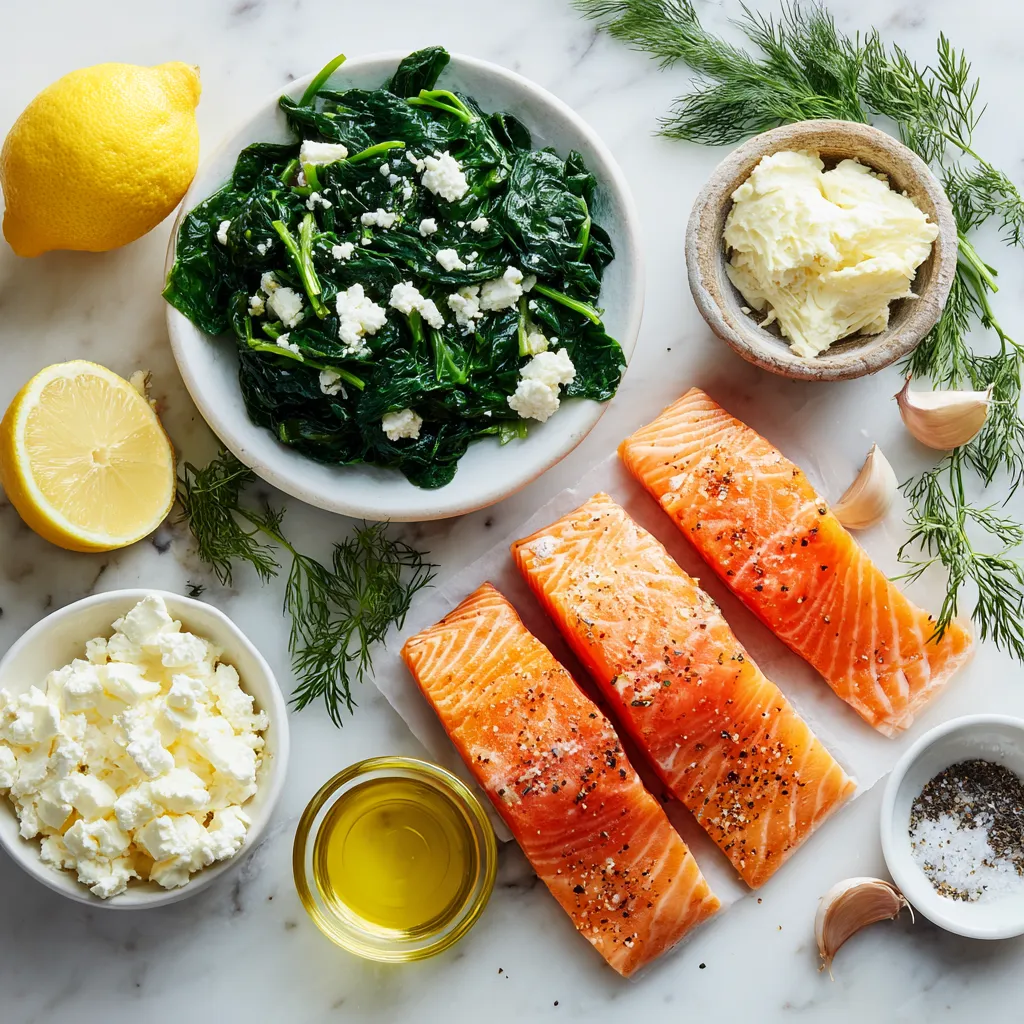
Step-by-Step Instructions
Preparation Steps
1. Start by preheating your oven to 375°F (190°C). This ensures even cooking for your salmon.
2. Next, heat a medium skillet over medium heat and add the olive oil.
3. Once the oil is hot, add the minced garlic and sauté it for about 1 minute. The garlic should smell great.
4. Now, add the roughly chopped spinach to the skillet. Cook it for 2-3 minutes until it wilts down.
5. Remove the skillet from heat and let the spinach cool for a bit.
6. In a mixing bowl, combine the wilted spinach, crumbled feta cheese, softened cream cheese, and fresh lemon juice.
7. Mix the ingredients well until they are creamy and fully combined.
Cooking Instructions
1. Take each salmon fillet and use a sharp knife to make a pocket. Slice horizontally, but don’t cut all the way through.
2. Season both the inside and outside of the salmon with salt and freshly ground black pepper. This adds nice flavor.
3. Stuff each salmon fillet with the creamy spinach and feta mixture. Press down gently to secure it inside.
4. Arrange the stuffed salmon fillets in a greased baking dish. Make sure they have space between them.
5. Place the dish in the oven and bake for 20-25 minutes. The salmon should flake easily with a fork when done.
6. For a golden top, turn on the broiler for 2-3 minutes. Watch carefully to avoid burning.
7. After baking, let the salmon rest for a couple of minutes. Garnish with fresh dill or parsley for extra flavor.
Tips for Checking Doneness
To check if your salmon is cooked, use a fork. Gently flake the thickest part. If it easily breaks apart, it is done. The salmon should look opaque and have a light pink color inside. Always trust your fork!
Tips & Tricks
Common Mistakes to Avoid
When making spinach feta stuffed salmon, a few mistakes can ruin your dish. Here are key points to watch for:
- Overstuffing: If you pack too much filling, the salmon may break.
- Skipping seasoning: Don’t forget to season both inside and outside of the salmon.
- Not checking doneness: Always check if the salmon flakes easily with a fork.
- Using cold ingredients: Room temperature cream cheese mixes better with other filling ingredients.
How to Make Ahead of Time
You can prepare this dish in advance to save time. Here’s how:
- Prep the filling: Make the spinach and feta mixture a day before. Store it in the fridge.
- Stuff the salmon: You can stuff the salmon fillets up to 4 hours ahead. Keep them covered in the fridge.
- Baking: When ready, just pop the stuffed salmon in the oven. Bake as instructed for fresh, hot meals.
Serving Suggestions
Serving matters almost as much as cooking. Here are some ideas to enhance your meal:
- Pair with sides: Serve salmon on a bed of zucchini noodles or alongside a garden salad.
- Add color: Use fresh herbs like dill or parsley as a garnish.
- Splash of lemon: Drizzle more lemon juice on top for a bright flavor.
- Wine pairing: A light white wine, like Sauvignon Blanc, complements the dish well.
Pro Tips
- Fresh Spinach is Key: Always opt for fresh spinach over frozen for a more vibrant flavor and better texture in your stuffing.
- Choose Quality Salmon: Look for wild-caught salmon if possible; it typically has a richer flavor and firmer texture than farmed varieties.
- Perfect Cooking Time: Avoid overcooking the salmon by checking for doneness a few minutes early; it should flake easily yet remain moist.
- Garnish for Presentation: Fresh herbs not only enhance flavor but also add a pop of color, making your dish visually appealing.
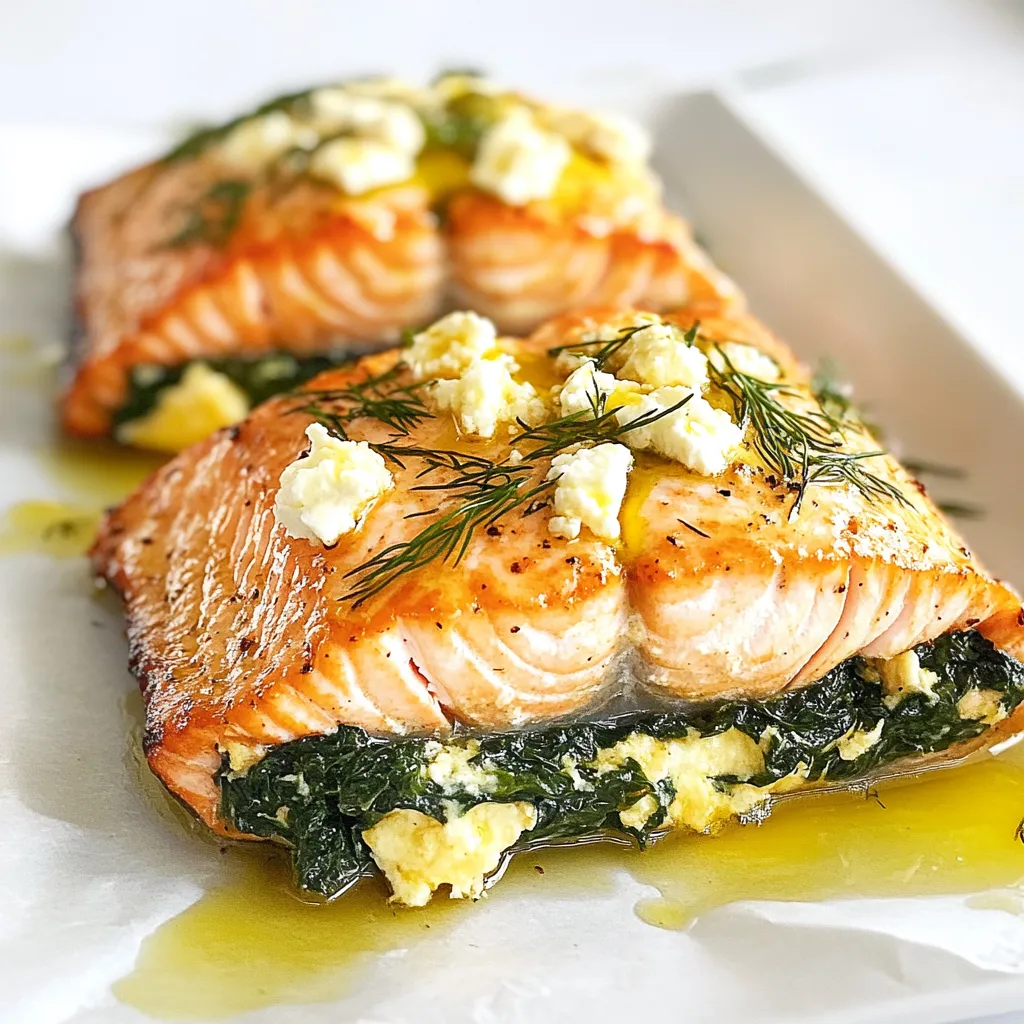
Variations
Different Cheese Options
You can switch up the cheese in this dish. Try goat cheese for a tangy twist. Cream cheese is a great base, but any cheese you enjoy will work. For a milder flavor, use ricotta. Each cheese adds a unique taste and texture.
Adding Proteins or Veggies
Want extra protein? Add cooked shrimp or crab meat to the filling. You can also toss in chopped sun-dried tomatoes or olives for more flavor. If you like crunch, add some chopped bell peppers or zucchini to the mix. These additions make the dish even more exciting.
Alternative Cooking Methods
You don’t have to bake the salmon if you prefer another method. Grilling adds a smoky flavor. Pan-searing gives a nice sear on the outside. You can even use an air fryer for a quicker, crispy result. Each method changes the taste but keeps it delicious. Choose what you like best!
Storage Info
Refrigeration Guidelines
You can store leftover stuffed salmon in the fridge. Place it in an airtight container. This keeps the salmon fresh and tasty for up to three days. Make sure to cool it to room temperature before sealing.
Freezing Instructions
To freeze the stuffed salmon, wrap each piece in plastic wrap. Then, place them in a freezer bag. This way, they can last for up to three months. Thaw the salmon in the fridge overnight before cooking.
Reheating Instructions
To reheat, preheat your oven to 350°F (175°C). Place the salmon in a baking dish. Cover it with foil to keep it moist. Heat for about 15-20 minutes, or until warmed through. You can also microwave it for 2-3 minutes, but this may dry it out. Enjoy your meal!
FAQs
What can I serve with Spinach Feta Stuffed Salmon?
You can pair this dish with many sides. Some good options are:
- Lightly sautéed zucchini noodles
- Fresh garden salad
- Quinoa or rice pilaf
- Roasted vegetables
These sides add color and flavor to your meal. They also balance the rich taste of the salmon. A splash of lemon juice on the side can brighten the dish.
Can I use frozen salmon for this recipe?
Yes, you can use frozen salmon. Just make sure to thaw it first. You can do this by leaving it in the fridge overnight. If you’re in a hurry, place it in cold water for about an hour. Once thawed, pat it dry before you stuff it. This helps the filling stick better.
How do I know when the salmon is fully cooked?
To check if the salmon is done, use a fork. Gently poke the thickest part of the fish. If it flakes easily, it is ready. The color should change from bright pink to a light, opaque hue. If you have a food thermometer, aim for an internal temperature of 145°F (63°C). This ensures the salmon is safe to eat and still juicy.
In this blog post, we covered all you need for making Spinach Feta Stuffed Salmon. We listed the main ingredients, measurements, and even nutritional facts. The step-by-step instructions help you prepare and cook perfectly. I shared tips to avoid common mistakes and variations to try. Finally, I added storage info and FAQs to clarify your doubts.
Cooking is fun, and this dish is simple. Enjoy the flavors and impress your famil
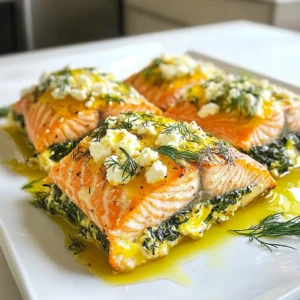
Savory Spinach & Feta Stuffed Salmon
Ingredients
- 4 fillets salmon (approximately 6 oz each)
- 2 cups fresh spinach, roughly chopped
- 1 cup feta cheese, crumbled
- 2 cloves garlic, finely minced
- 1 4 cup cream cheese, softened to room temperature
- 1 tablespoon fresh lemon juice
- 1 tablespoon extra virgin olive oil
- to taste salt
- to taste freshly ground black pepper
- for garnish fresh dill or parsley
Instructions
- Preheat your oven to 375°F (190°C) to ensure it's hot enough for even cooking.
- In a medium-sized skillet over medium heat, pour in the olive oil. Once heated, add the minced garlic and sauté for about 1 minute, until it becomes fragrant and slightly golden.
- Add the chopped spinach to the skillet, cooking until it wilts down, which will take about 2-3 minutes. Once wilted, remove the skillet from the heat and set aside to cool slightly.
- In a mixing bowl, combine the sautéed spinach, crumbled feta cheese, softened cream cheese, and fresh lemon juice. Stir thoroughly until all ingredients are well mixed and creamy.
- Using a sharp knife, carefully create a pocket in each salmon fillet by slicing horizontally through the thickest part, ensuring not to cut all the way through to the other side.
- Generously season both the inside and outside of each salmon fillet with salt and freshly ground black pepper for enhanced flavor.
- Stuff each salmon fillet with the creamy spinach and feta mixture, gently pressing down to secure it within the pocket created.
- Arrange the stuffed salmon fillets in a greased baking dish, ensuring they are not overcrowded for even cooking.
- Place the dish in the preheated oven and bake for 20-25 minutes or until the salmon is thoroughly cooked and flakes easily with a fork.
- For a beautifully golden top, switch on the broiler for an additional 2-3 minutes at the end of the baking time, keeping a close eye to avoid burning.
- Carefully remove the baking dish from the oven, let the salmon rest for a couple of minutes, then garnish with fresh dill or parsley if desired for that extra burst of flavor and color.


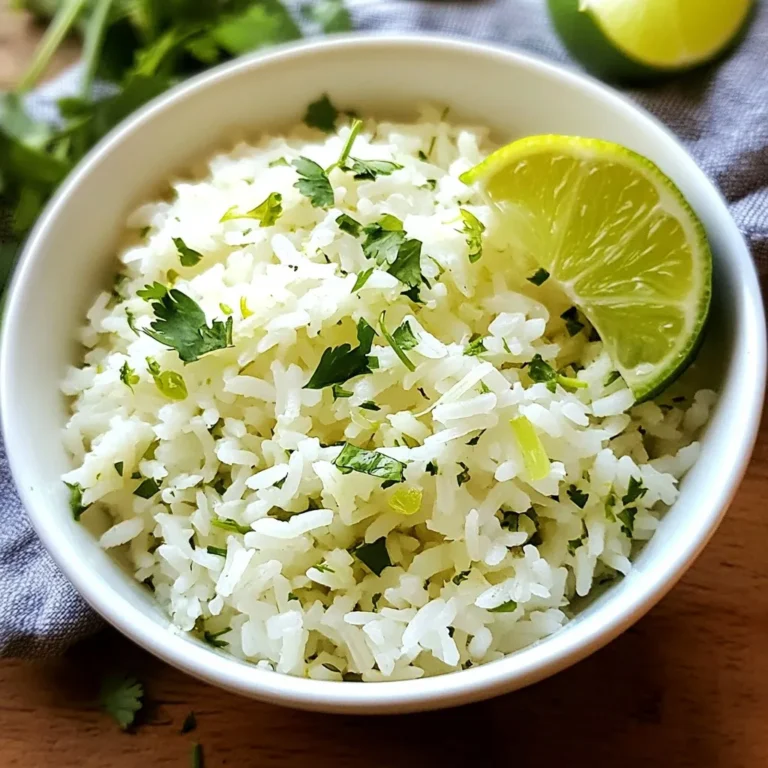
![- 4 bone-in chicken thighs, skin-on - 2 medium zucchinis, sliced into half-moons - 1 bell pepper (red or yellow), chopped into bite-sized pieces - 1 cup cherry tomatoes, halved - 1 red onion, cut into wedges - 4 cloves garlic, minced - 1/4 cup extra virgin olive oil - Juice of 2 fresh lemons - Zest of 1 lemon - 2 teaspoons dried oregano - 1 teaspoon smoked paprika - Sea salt and freshly cracked black pepper to taste - Fresh parsley, finely chopped for garnish Using fresh ingredients makes this dish taste great and healthy. Chicken thighs have good flavor and keep moist while cooking. Zucchini and bell peppers add vitamins and minerals. Cherry tomatoes offer a sweet burst with every bite. Garlic adds depth and may boost your immune system. Olive oil is a healthy fat that helps with heart health. Fresh lemon juice brightens the dish and adds vitamin C. Oregano and paprika bring warmth and nice aroma to the meal. You can swap chicken thighs for chicken breasts if you prefer leaner meat. Use any bell pepper color you like. If you have other veggies on hand, such as carrots or green beans, feel free to add them. For a different flavor, try using lime juice instead of lemon juice. If you don't have fresh garlic, garlic powder works too. You can replace olive oil with avocado oil for a similar taste. Start by making the marinade. In a medium bowl, mix together the olive oil, lemon juice, lemon zest, minced garlic, dried oregano, smoked paprika, sea salt, and black pepper. Whisk this mix until it’s smooth and bright. Next, take your chicken thighs. Place them in a large resealable bag or a shallow dish. Pour half the marinade over the chicken. Make sure each piece gets coated well. Seal the bag or cover the dish. Let it sit in the fridge for at least 30 minutes, or up to 2 hours for extra flavor. While the chicken marinates, preheat your oven to 425°F (220°C). This step is key for perfect roasting. Now, prepare your veggies. In a large bowl, toss together the sliced zucchini, chopped bell pepper, halved cherry tomatoes, and onion wedges. Drizzle the remaining marinade over the veggies. Toss them gently to coat evenly. Once prepped, line a sheet pan with parchment paper. This helps with easy cleanup. Place the marinated chicken in the center of the pan. Surround it with the veggies, spreading them out nicely. Put the sheet pan in the oven. Bake for 30 to 35 minutes. The chicken should reach an internal temperature of 165°F (75°C). The veggies should become tender and slightly caramelized. To check if the chicken is done, use a meat thermometer. Insert it into the thickest part of the thigh. If it reads 165°F (75°C), it’s ready. If not, bake a bit longer, checking every few minutes. Once done, take the pan out of the oven. Let it rest for a few minutes. This helps keep the juices in the chicken. Finish with a sprinkle of fresh parsley for color before serving. Enjoy your meal! To get the most flavor, marinate the chicken thighs. Use a mix of lemon juice, zest, garlic, and spices. This mix creates a tasty coating that seeps into the meat. I recommend marinating for at least 30 minutes. For deeper flavor, marinate for up to 2 hours. Always keep the chicken in the fridge while it soaks. This keeps it fresh and safe to eat. Seasoning is key to making your dish pop. Use sea salt and freshly cracked black pepper. They enhance the chicken and veggies. You can also try smoked paprika for warmth and depth. Dried oregano adds a nice herb flavor. Make sure to sprinkle seasonings evenly over everything. Taste as you go to ensure the flavors are just right. Cleanup can be a breeze with parchment paper. Line your sheet pan with it before adding the chicken and veggies. It prevents sticking and makes for easy cleanup. Once the meal is done, just toss the paper away. You can spend more time enjoying your meal, not scrubbing dishes. This little trick saves time and effort in the kitchen. {{image_4}} You can swap chicken thighs for other proteins. Try bone-in chicken breasts or turkey thighs. They will give you a similar juicy flavor and texture. If you want something lighter, go for shrimp or firm tofu. Shrimp cooks fast and adds a sweet touch. Tofu soaks up the lemon flavor well. Make sure to adjust your cooking time based on what protein you choose. Using seasonal veggies makes your dish fresh and vibrant. In the summer, use squash, corn, or eggplant. For fall, add sweet potatoes or Brussels sprouts. Winter calls for hearty greens like kale or root vegetables. You can mix different colors and textures for a fun look. Don’t be afraid to get creative and use what you love! Herbs and spices can really change your dish. For a fresh taste, add thyme or rosemary. If you want a kick, sprinkle in some red pepper flakes. For a bit of sweetness, try adding a dash of cinnamon. Feel free to mix and match spices. Experimenting can lead to unique flavors that you’ll want to make again! For the full recipe, check out the Zesty Sheet Pan Lemon Chicken & Veggie Medley. To store leftovers, let the chicken and veggies cool first. Transfer them to an airtight container. This keeps them fresh and prevents odors. You can store them in the fridge for up to three days. If you want to keep them longer, freezing is a great option. When you’re ready to eat, reheating is simple. Preheat your oven to 350°F (175°C). Spread the chicken and veggies on a baking sheet. Heat for about 15 to 20 minutes, or until warmed through. You can also use a microwave. Place the food in a microwave-safe dish, cover loosely, and heat in short bursts. Stir in between to ensure even heating. If you plan to freeze your leftovers, do it as soon as they cool. Place portions in freezer bags or containers. Remove as much air as possible to avoid freezer burn. This dish can last for up to three months in the freezer. When you’re ready to eat, thaw it overnight in the fridge before reheating. This method keeps the flavors intact and makes for a quick meal. For more delicious ideas, check out the [Full Recipe]. To make sheet pan lemon chicken and veggies, start by prepping the marinade. Mix olive oil, lemon juice, lemon zest, garlic, oregano, smoked paprika, salt, and pepper in a bowl. This creates a zesty mix. Next, marinate the chicken thighs in half of this mixture for at least 30 minutes. While the chicken marinates, preheat your oven to 425°F (220°C). Prepare your veggies by mixing zucchini, bell pepper, cherry tomatoes, and red onion in another bowl. Toss them with the leftover marinade. Line a sheet pan with parchment paper for easy cleanup. Place the marinated chicken in the center and surround it with the vegetables. Bake for 30-35 minutes at 425°F until the chicken reaches 165°F (75°C). Let it rest before serving. For the full recipe, check out the complete guide. Yes, you can use boneless chicken for this recipe. Boneless chicken cooks faster than bone-in chicken. Adjust the cooking time to about 20-25 minutes. Ensure the chicken reaches an internal temperature of 165°F (75°C) for safety. Boneless chicken will soak up the marinade well, giving a great flavor. Many vegetables pair well with lemon chicken. Here are some great options: - Broccoli - Carrots - Asparagus - Bell peppers - Green beans - Brussels sprouts These veggies add color and nutrition to your meal. They also complement the lemon flavor nicely. You can use a mix of your favorites for a colorful dish. You learned how to make a great sheet pan lemon chicken and veggies dish. We covered ingredients, cooking steps, and tips for the best flavor. Remember to try different proteins, veggies, and flavors to mix things up. Storing your leftovers correctly ensures they stay fresh longer. Now, enjoy your tasty meal. Happy cooking!](https://dishtreats.com/wp-content/uploads/2025/06/6619f650-0475-47be-ab23-3ec1a8437763-768x768.webp)
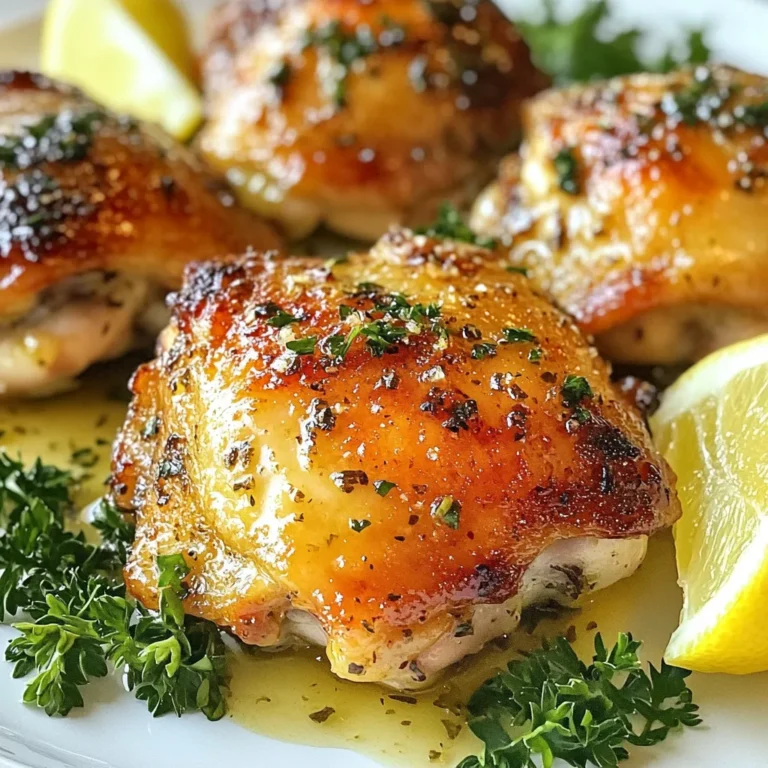
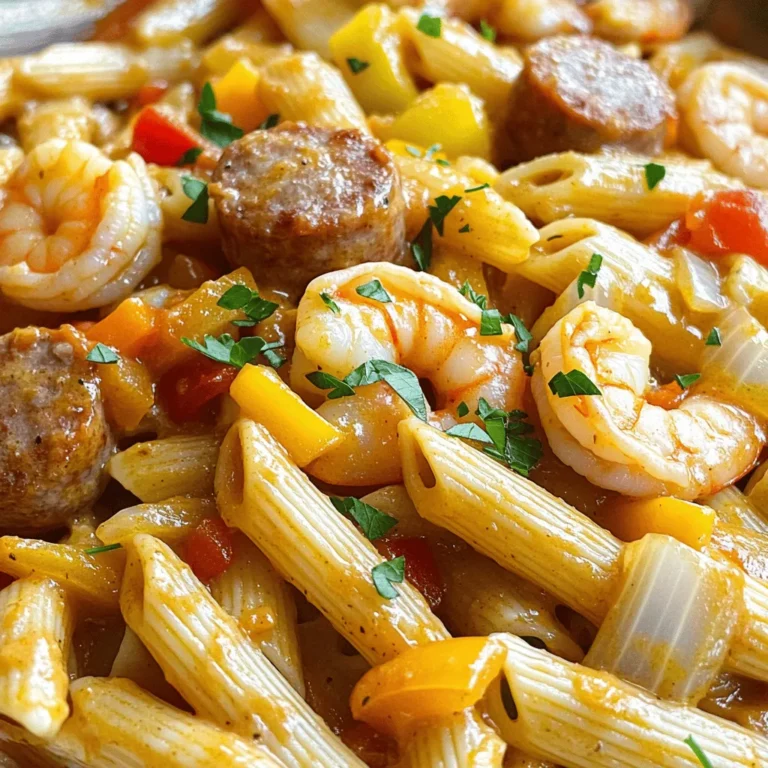
. You now have all the tools to make savory herb roasted chicken thighs. We discussed the key ingredients, how to prepare and roast the chicken, and tips for crispy skin and flavor. You also learned about variations and storage methods to keep your meal fresh. Enjoy experimenting with flavors and techniques. Cooking should bring joy. Trust your skills, and share this tasty dish with others!](https://dishtreats.com/wp-content/uploads/2025/06/7c34b550-313c-42ec-9338-3ef305d43656-768x768.webp)
![To make this dish, you need a few key items. These ingredients work together for great flavor. Here’s what you will need: - 4 chicken thighs, bone-in and skin-on - 1/4 cup honey - 1/4 cup low-sodium soy sauce - 4 cloves garlic, finely minced - 1 tablespoon fresh ginger, grated - 1 teaspoon sesame oil - 1 tablespoon olive oil - Salt and freshly ground black pepper to taste While the main ingredients shine, you can add optional items for extra flavor. Try using these to enhance your dish: - A splash of rice vinegar for acidity - A pinch of red pepper flakes for heat - Fresh herbs like cilantro or parsley for freshness Presentation matters when serving food! Beautiful garnishes make a dish pop. Here’s what to top your chicken with: - 2 green onions, finely sliced - Sesame seeds for a crunchy finish First, grab a medium mixing bowl. Add 1/4 cup honey, 1/4 cup low-sodium soy sauce, 4 minced garlic cloves, 1 tablespoon of grated ginger, and 1 teaspoon of sesame oil. Whisk them together until mixed well. This sweet and savory blend will become your marinade and glaze. It infuses the chicken thighs with tasty flavor. Next, season the chicken thighs. Use salt and freshly ground black pepper on both sides. Heat 1 tablespoon of olive oil in a large skillet over medium-high heat. Once hot, place the chicken thighs skin-side down. Let them sear for about 6-8 minutes. You want that skin golden brown and crispy. This step adds great texture and taste. After searing, flip the chicken thighs. Pour the honey garlic mixture over them. Let it simmer gently, coating the chicken in flavor. Cover the skillet and reduce the heat. Cook for 15-20 minutes until the chicken reaches 165°F (75°C) inside. When the chicken is ready, remove the lid. Turn the heat back up to medium-high. Let the sauce simmer for 5 minutes, stirring often. This will thicken the sauce, helping it stick to the chicken. Once thickened, take the skillet off the heat. Allow the chicken to rest for a few minutes. This lets the juices settle, keeping the meat tender. Serve the chicken on a platter, drizzling the sauce over the top. Add a sprinkle of sliced green onions and sesame seeds for a bright finish. Enjoy your Honey Garlic Chicken Thighs! For the full recipe, refer to [Full Recipe]. To get crispy skin, start with bone-in, skin-on chicken thighs. Pat the skin dry with paper towels. This step removes moisture and helps the skin crisp up nicely. Heat olive oil in a hot skillet before adding the chicken. Sear it skin-side down for 6-8 minutes. Resist the urge to move the chicken too much. Let it cook undisturbed for a golden crust. For tender chicken, season it well with salt and pepper. This enhances flavor and locks in moisture. When cooking, keep an eye on the internal temperature. Aim for 165°F (75°C) to ensure it’s fully cooked. Let the chicken rest after cooking. This lets the juices settle back in, making each bite juicy and satisfying. Honey garlic chicken pairs well with several sides. Try serving it with steamed rice for a classic combo. The rice soaks up the tasty sauce. You can also serve it with a fresh green salad. The crunch of the veggies complements the soft chicken perfectly. Roasted vegetables add color and flavor, making for a well-rounded meal. For the full recipe, check out [Full Recipe]. {{image_4}} You can change the taste of honey garlic chicken thighs by swapping some ingredients. For a fruitier twist, try using maple syrup instead of honey. This will give your dish a rich, deep flavor. You can also replace soy sauce with coconut aminos for a gluten-free option. If you like citrus, add some fresh orange juice to the marinade. It brightens the flavor and adds a zesty note. While chicken thighs are juicy, you can use other cuts too. Chicken breasts work well if you prefer leaner meat. Just remember, they may dry out faster, so watch the cooking time. Drumsticks are another tasty option. They are fun to eat and stay moist during cooking. Whichever cut you choose, make sure it is about the same size for even cooking. Want some heat? It's easy to spice things up! Add red pepper flakes or sriracha to the marinade for a kick. You can also use fresh jalapeños or chili paste for a bolder flavor. Adjust the amount based on your heat tolerance. If you love spicy food, this will make your honey garlic chicken thighs truly exciting. For the full recipe, check out the [Full Recipe]. Store your honey garlic chicken thighs in an airtight container. Make sure to let them cool to room temperature first. They will stay fresh in the fridge for up to 3 days. This keeps the flavors intact and ensures the chicken remains juicy. To reheat, place the chicken thighs in a skillet over low heat. Cover the skillet to keep moisture in. Heat until warmed through, about 5-10 minutes. You can also microwave them, but cover the dish to prevent drying out. You can freeze the chicken thighs for later use. Wrap each thigh in plastic wrap, then place them in a freezer bag. They will last for about 2-3 months in the freezer. Thaw them in the fridge overnight before reheating. This method keeps the chicken tasty and tender. For the full recipe, refer to the section above. You should cook chicken thighs for about 20-25 minutes. Start by searing them for 6-8 minutes on the skin side. Then, flip them over and pour the sauce on top. Cover the skillet and let them simmer for 15-20 minutes. This method helps keep the meat juicy and full of flavor. Yes, you can use boneless chicken thighs. They will cook faster than bone-in thighs. Sear them for about 5-7 minutes on each side. Make sure to check their internal temperature. It should reach 165°F (75°C) to be safe to eat. The best way to check if the chicken is done is with a meat thermometer. Insert it into the thickest part of the thigh. When it reads 165°F (75°C), the chicken is ready. You can also cut into the meat. If the juices run clear, it’s cooked. To adjust the sweetness, add more honey for a sweeter taste. If you want it less sweet, add more soy sauce or a splash of vinegar. Taste the sauce as you go. This way, you can find the perfect balance for your dish. For the full recipe, please check the [Full Recipe]. Honey garlic chicken thighs are simple and tasty. We covered the key ingredients and optional marinades. You learned how to prepare the marinade and cook the chicken. I shared tips for crispy skin, tender meat, and delicious sides. We also explored variations and storage tips to keep your meals fresh. When you try this recipe, it will impress your family and friends. Enjoy the rich flavors and make it your own!](https://dishtreats.com/wp-content/uploads/2025/06/32d13aa5-8be9-48e3-be5a-1699ade8ce81-768x768.webp)